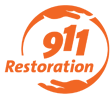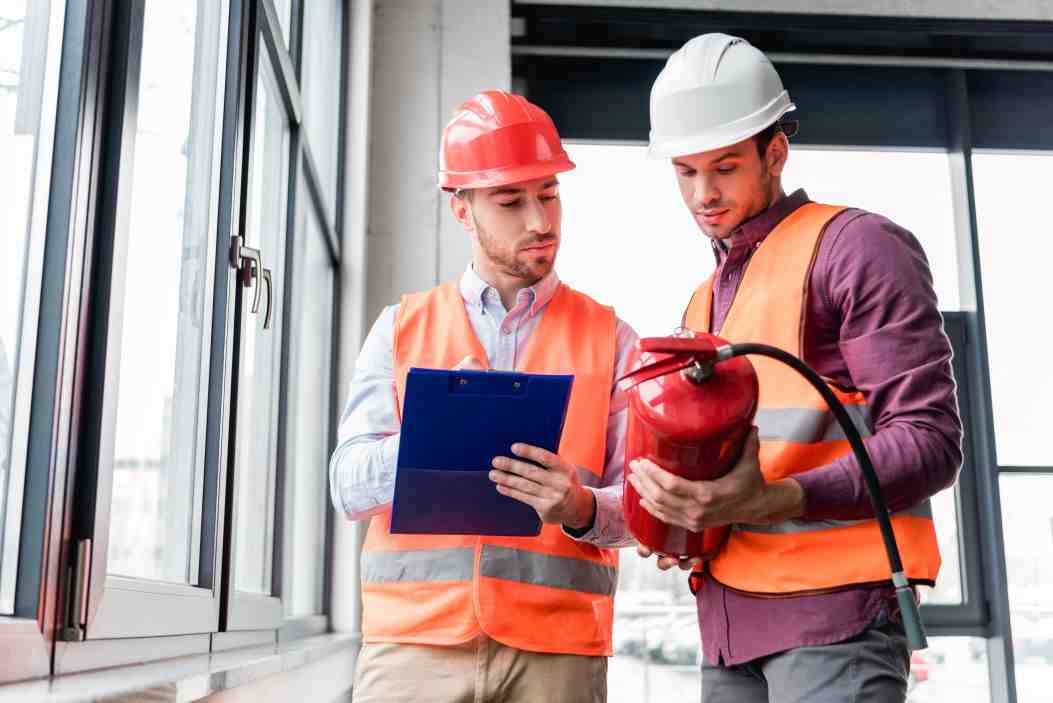Navigating City Inspections for Fire Damage Home Repairs
As fire season in California intensifies, homeowners across the state are increasingly vulnerable to the devastating effects of wildfires. Whether it’s the result of a wildfire or a home fire, the damage caused can be overwhelming. Fire restoration is a crucial process to ensure that homes are not only safe to inhabit again, but also restored to their original condition.
You may be wondering if your home repairs after fire damage require a city inspection. The answer is Yes, repairs from fire damage typically need a city inspection to confirm the property is safe for occupancy and meets local building codes. Here’s a quick overview:
- Assessment: Inspectors evaluate the extent of damage, particularly to structural elements.
- Permits: Obtaining necessary permits is crucial before beginning repairs.
- Compliance: Passing inspection ensures adherence to safety and construction standards.
Fire damage can have devastating effects on a home, leaving homeowners overwhelmed with the complexities of repairs. Navigating the necessary city inspections is a critical step in the recovery process to ensure the safety and structural integrity of your home. These inspections help confirm that all repairs meet local building codes and are vital for compliance and safety.
At 911 Restoration of the Inland Empire, we understand the vital role these inspections play in your home’s recovery journey. My name is Allen Andra, and with years of experience in fire damage restoration, I’ve helped countless homeowners steer city inspections smoothly and efficiently. As we dig deeper, I’ll guide you through the key steps and considerations that will ease this process.
Understanding Fire Damage and Its Impact
Fire damage can wreak havoc on a home, affecting not just the structure but also the health and safety of its occupants. Let’s break down the different types of damage you might face after a fire:
Fire Damage
When a fire occurs, the immediate destruction is often visible. The flames can compromise the structural integrity of your home, damaging walls, ceilings, and floors. City inspections are crucial to assess these damages and ensure that rebuilding efforts meet safety standards.
Smoke Damage
Smoke can penetrate deeply into walls, furniture, and other belongings. It leaves behind a lingering odor and can stain surfaces. What’s more, toxic chemicals released during the fire can seep into materials, posing long-term health risks. Melanie Musson, a home insurance specialist, highlights that even areas untouched by flames can be affected by smoke, making cleanup essential.
Water Damage
Ironically, water used to extinguish the fire can cause significant damage. It can lead to soaked carpets, warped floors, and damaged walls. Water damage also sets the stage for mold growth if not addressed promptly.
Mold Growth
Mold thrives in damp environments, and after a fire, moisture from firefighting efforts creates a perfect breeding ground. Mold can spread quickly, damaging your home further and posing health risks like respiratory issues. Early intervention by fire restoration companies can help mitigate this risk.
Toxic Cleanup
Fires can release harmful substances like soot and carbon monoxide. Soot particles are especially dangerous, as they can cause respiratory problems and other serious health issues. Toxic cleanup is a vital part of the restoration process to ensure a safe living environment.
Understanding these various types of damage is the first step in planning effective repairs. At 911 Restoration of the Inland Empire, we specialize in comprehensive fire damage restoration, ensuring your home is safe and livable once more.
Do You Need a City Inspection for Fire Damage Repair Work?
Why City Inspections Are Necessary
City inspections play a critical role in the process of repairing a fire-damaged home. They are necessary to ensure safety, compliance with building codes, and the structural integrity of the property. When a fire damages a house, it can weaken the structure, making it unsafe for residents. A city inspector assesses these damages and determines if the repairs meet the required safety standards.
Steps to Schedule a City Inspection
Contact Information: To begin the inspection process, reach out to your local city department. In Houston, for example, you can contact the Structural Inspections Section at 832-394-8840 to schedule your fire damage inspection.
Fire Damage Report: Before applying for a building permit, a fire damage report is essential. This report, often prepared by the fire department, outlines the extent of the damage and is a key document for both the inspection and insurance claims.
Building Permits: Obtain the necessary building permits. This involves logging into a city portal, such as the iPermits account in Houston, and completing the building permit application. You’ll need to upload a repairs spec list or a complete set of plans, depending on the damage scope.
Scheduling the Inspection: Once the application is approved, schedule the inspection. The inspection process involves a city inspector visiting the site to evaluate the damage and ensure that any repair work complies with local regulations.
Inspection Process: During the inspection, the city inspector will check for compliance with building codes, verify the structural integrity of the repairs, and ensure that all safety measures are in place. If corrections are required, you’ll need to address these issues and schedule a reinspection.
By following these steps, you ensure that your home not only meets safety standards but also complies with all necessary legal requirements, paving the way for a smooth repair process.
Preparing for the Inspection
Preparing for a city inspection after fire damage involves several key steps. Proper preparation can streamline the process and ensure compliance with local regulations.
What to Expect During the Inspection
Damage Assessment and Documentation
Before the inspection, it’s crucial to have a thorough damage assessment. This assessment should detail all areas affected by the fire, including structural components, smoke damage, and any water damage from firefighting efforts. Documentation is vital. Keep a detailed record of the damage with photos and written descriptions. This documentation will be essential for both insurance claims and contractor estimates.
Insurance Claims and Contractor Estimates
Start by filing your insurance claims as soon as possible. The insurance company may send a fire remediation company to begin cleanup and mitigation efforts. Use the damage assessment report to support your claim. At the same time, gather contractor estimates for the necessary repairs. These estimates will help you understand the scope of work and the costs involved, which can aid in negotiations with your insurance provider.
Inspection Checklist and Inspector’s Role
During the inspection, a city inspector will evaluate the property to ensure all repairs meet local building codes and safety standards. Here’s what to expect:
- Structural Integrity: The inspector will check the structural integrity of the home, ensuring that any damage has been properly addressed.
- Compliance: They will verify that all repairs comply with current building codes.
- Safety Measures: The inspector will ensure that necessary safety measures, such as smoke detectors and fire extinguishers, are in place.
Common findings during inspections may include issues with electrical systems, plumbing, or structural components that need further attention.
Required Documentation
Have all necessary documentation ready for the inspector, including the fire damage report, building permits, and contractor estimates. This will facilitate a smoother inspection process.
Post-Inspection Requirements
Repair Permits and Compliance
After the inspection, if the inspector identifies any areas that do not comply with local codes, you’ll need to address these issues. This may involve obtaining additional repair permits or making further modifications to meet compliance standards. Ensure that all work is documented and that permits are kept on-site until final approval is granted.
Reinspection and Final Approval
Once repairs are made, schedule a reinspection to verify that all issues have been resolved. The city inspector will revisit the property to confirm compliance with all regulations. Upon successful completion, you’ll receive final approval, allowing you to move forward with any remaining restoration efforts.
By understanding these steps and preparing thoroughly, you can steer the inspection process with confidence and ensure your home is safe and compliant.
Repairing Fire Damage: Key Considerations
Repairing a home after a fire involves careful planning and decision-making. Here, we’ll discuss some key considerations to help you steer this process effectively.
Hiring the Right Professionals
When it comes to fire damage repairs, choosing the right professionals is crucial. Fire remediation companies specialize in restoring properties affected by fire and smoke. They have the expertise to handle everything from structural repairs to cosmetic fixes. Additionally, toxic cleanup specialists are essential for removing hazardous materials, such as soot and smoke residues, which can pose health risks if not properly addressed.
Contractors play a significant role in the repair process. Ensure they are licensed and experienced in fire damage restoration. It’s wise to obtain multiple estimates to compare costs and services offered. This will help you avoid unnecessary expenses and ensure the work is done to a high standard.
Insurance coverage can significantly offset repair costs. Review your policy to understand what is covered and work closely with your insurance company to maximize your claim. This can include coverage for structural repairs, professional cleaning, and even temporary housing if needed.
DIY vs. Professional Repairs
Some homeowners may consider tackling fire damage repairs themselves to save money. However, weigh the cost comparison, safety concerns, and expertise required.
DIY repairs might seem cost-effective initially, but without the proper skills and equipment, you could inadvertently cause more harm than good. Fire damage often involves complex issues, such as compromised structural components or hidden smoke damage, which require professional assessment and repair.
Safety concerns are paramount. Fire-damaged homes can harbor toxic substances like soot and smoke, which are hazardous to health. Professionals are equipped with the necessary protective gear and cleaning agents to handle these safely.
In terms of expertise required, professionals offer a level of knowledge and experience that is difficult to match. They understand building codes, can steer the permitting process, and ensure all repairs meet safety standards. This expertise is invaluable in preventing future issues and ensuring the longevity of your repairs.
While DIY repairs may seem appealing, hiring professionals for fire damage restoration is often the safer and more effective choice. They bring the necessary skills, knowledge, and equipment to restore your home safely and efficiently.
Frequently Asked Questions about Fire Damage Home Repairs
Is it safe to buy a house that had fire damage?
Buying a house that has experienced fire damage can be safe, but it requires careful consideration. City inspections play a crucial role in ensuring safety. These inspections verify that all repairs meet building codes and that the home is structurally sound. It’s important to check that all repair work was permitted and inspected by a city inspector.
When considering such a purchase, look for visible signs of previous damage, like charred wood or smoke stains, especially in less visible areas like attics or crawl spaces. If possible, obtain documentation of the fire and subsequent repairs. This information can help you understand the extent of the damage and what was done to fix it.
Can you repair a house that caught on fire?
Yes, a house that has caught on fire can often be repaired. The first step is to conduct a fire damage assessment, usually done by the fire department, which will detail the extent of the damage. This report is essential for working with insurance companies and contractors.
Most insurance policies cover a significant portion of fire damage repairs, but they might not cover upgrades to meet current building codes. It’s important to work with experienced fire remediation companies and contractors who can handle both structural and cosmetic repairs. They will ensure that the home is safe, meets all regulations, and is restored to its previous condition.
How to estimate fire damage costs?
Estimating fire damage costs involves several steps. Start with the fire damage assessment report, which provides a detailed breakdown of the damage. This report can help you identify which parts of the home need repair or replacement.
Next, obtain contractor estimates for the necessary repairs. Get multiple quotes to compare costs and services. This helps in understanding the financial scope of the project and in negotiating with your insurance company. Insurance coverage can significantly reduce out-of-pocket expenses, so review your policy carefully to know what is covered.
Consider potential building code upgrades required by local regulations, as these can add to the costs. It’s also wise to factor in the cost of professional cleaning and toxic cleanup, especially if smoke and soot damage are extensive.
By systematically following these steps, you can develop a comprehensive estimate of the costs involved in repairing fire damage to a home.
The 911 Restoration Promise
Navigating the complexities of fire damage repair can be daunting, but understanding the importance of city inspections is crucial for ensuring home safety. City inspections confirm that all repairs comply with local building codes and that the property’s structural integrity is intact. This process not only safeguards your investment but also ensures the safety of future occupants.
At 911 Restoration of Inland Empire, we specialize in guiding homeowners through every step of the fire damage repair process. From conducting thorough assessments to managing city inspections, our team is dedicated to making your home safe and livable again. We understand that dealing with fire damage is stressful, which is why we offer a 45-minute response time and are available 24/7 to address your needs promptly.
Our expertise in the restoration industry, combined with our commitment to customer satisfaction, makes us a reliable partner in restoring your home. Whether it’s handling insurance claims or ensuring compliance with city regulations, we are here to provide you with a smooth and efficient restoration experience.
For more information on our fire damage restoration services, visit our Fire & Smoke Damage Restoration page. Let us help you steer the challenges of fire damage repair and restore your peace of mind.




